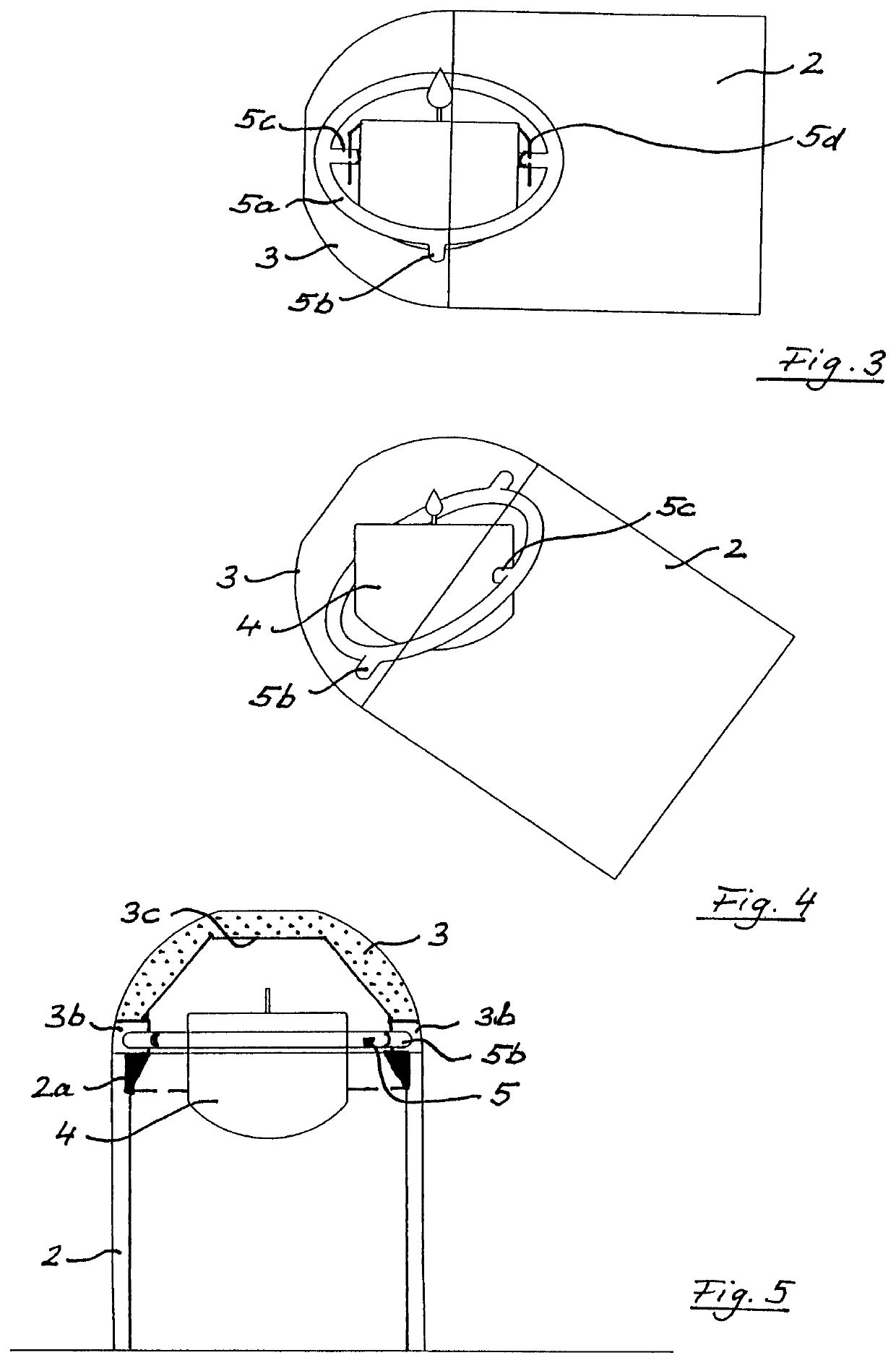Burning lamp, in particular wind light and suspension thereto
- Summary
- Abstract
- Description
- Claims
- Application Information
AI Technical Summary
Benefits of technology
Problems solved by technology
Method used
Image
Examples
Embodiment Construction
[0016]FIG. 1 shows a burning lamp 1, in particular in the form of a wind light, with a base 3 and a translucent housing part 2 placed on it, and with a support tray 4 (for a burning agent). The burning agent is preferably a wax candle whose wick is lit here, as schematically indicated by a flame. As described below, the support tray 4 is pivotable by means of a gimbal suspension 5 relative to the housing part 2 and also to the hemispherical base 3 about two axes (5b-5b; 5c-5c), each formed by two correspondingly coaxial pins. Such a construction is also useful for food containers, in which case the support tray 4 contains e.g. a sugar supply (or a variable fragrance dispenser).
[0017]As shown in FIG. 2 (and the other figures), on ring 5a, two pins 5b are directed radially outward and two pins 5c are directed radially inward towards support tray 4. Therefore, the support tray 4 can move in two dimensions, i.e. it has two so-called degrees of freedom, so that the support tray 4 always ...
PUM
 Login to View More
Login to View More Abstract
Description
Claims
Application Information
 Login to View More
Login to View More - R&D
- Intellectual Property
- Life Sciences
- Materials
- Tech Scout
- Unparalleled Data Quality
- Higher Quality Content
- 60% Fewer Hallucinations
Browse by: Latest US Patents, China's latest patents, Technical Efficacy Thesaurus, Application Domain, Technology Topic, Popular Technical Reports.
© 2025 PatSnap. All rights reserved.Legal|Privacy policy|Modern Slavery Act Transparency Statement|Sitemap|About US| Contact US: help@patsnap.com


